What’s New in DataSpell 2022.3
DataSpell 2022.3: Support for Remote Interpreter Connections via SSH, Remote Jupyter Debugging, Local History for Tracking and Reverting Changes
Remote development
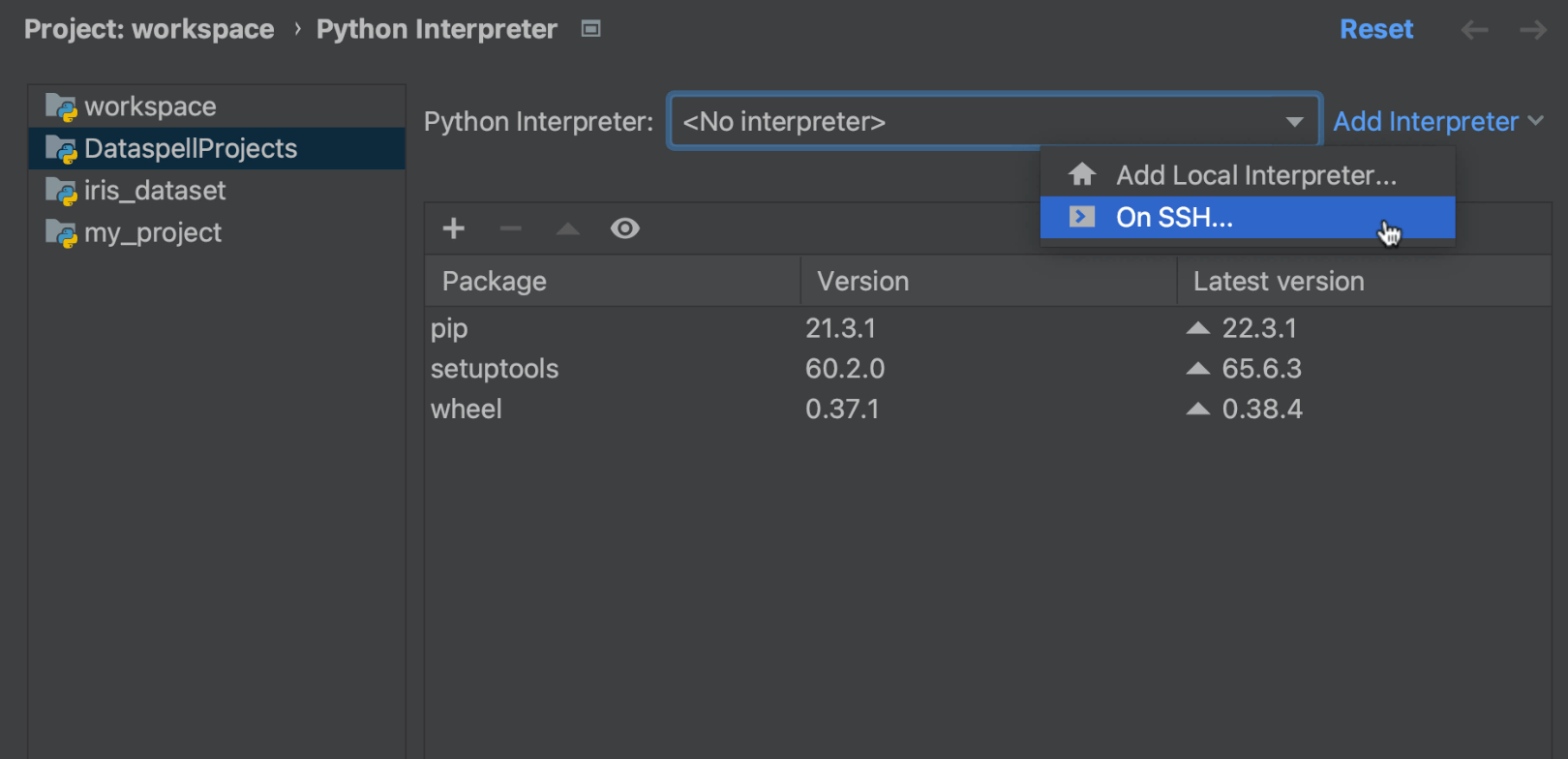
Configure remote interpreters using SSH
Remote Python interpreters can now be used via SSH connections. Local project files will be synced with and executed on the remote server, and packages can be added and removed using the UI.
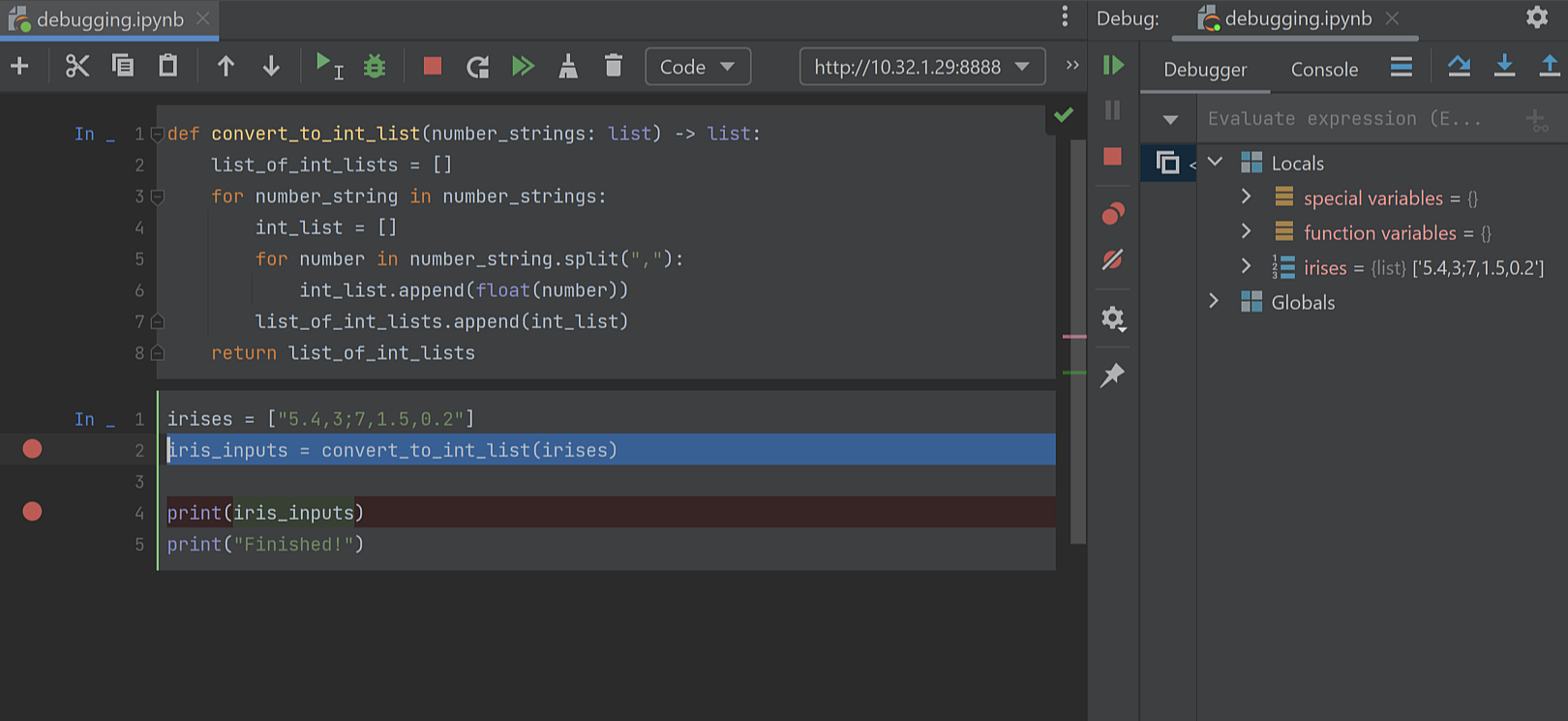
Remote debugging on Jupyter
It is now possible to debug notebooks on remote Jupyter servers, with support for Step Into and Step Over functionality.
Editor
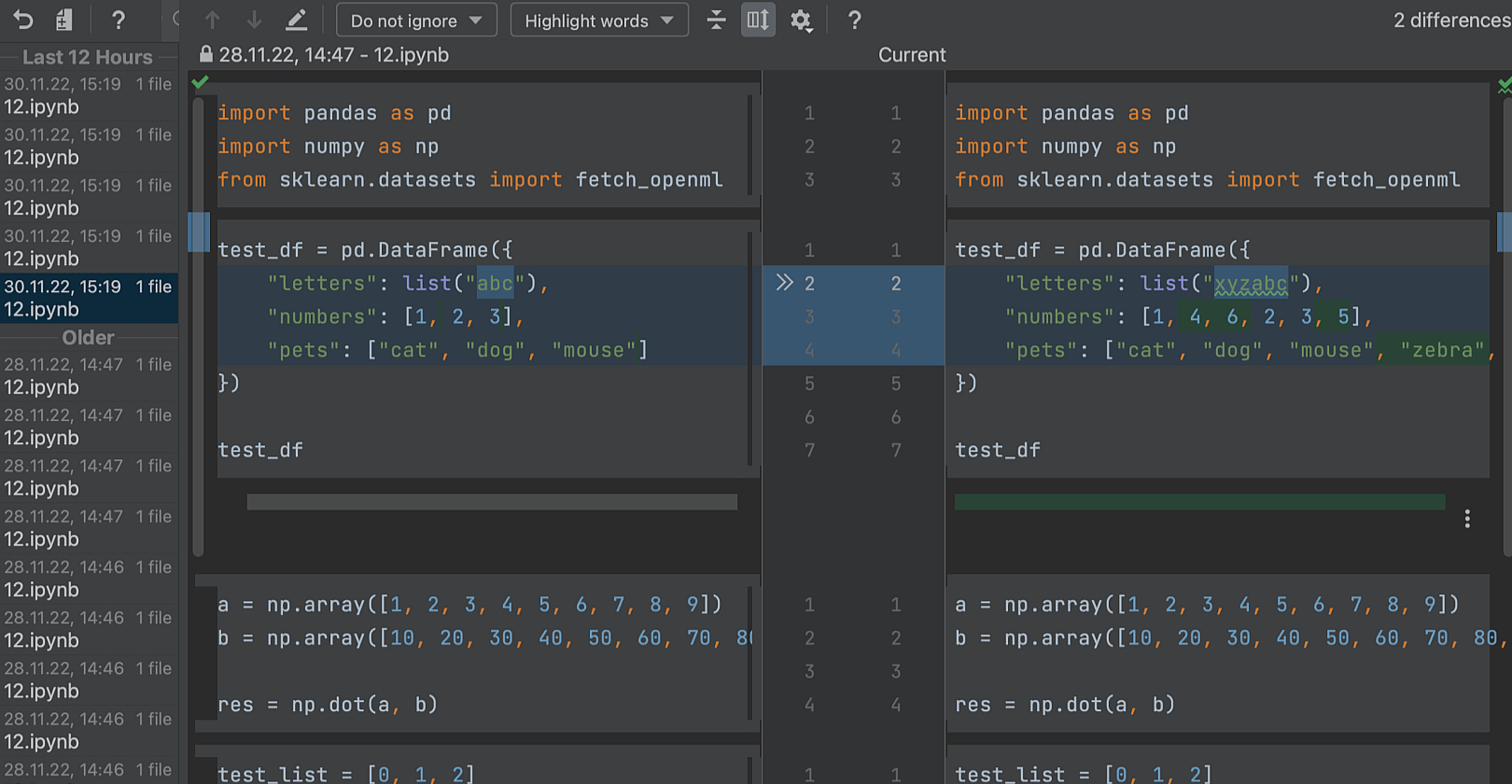
Ability to track and revert changes in Jupyter notebooks
Meaningful changes to your current file are automatically tracked independently from version control. These changes are stored as checkpoints in Local History, allowing you to easily view and revert to earlier states. Diffs between checkpoints can be compared using fully rendered Jupyter notebooks.
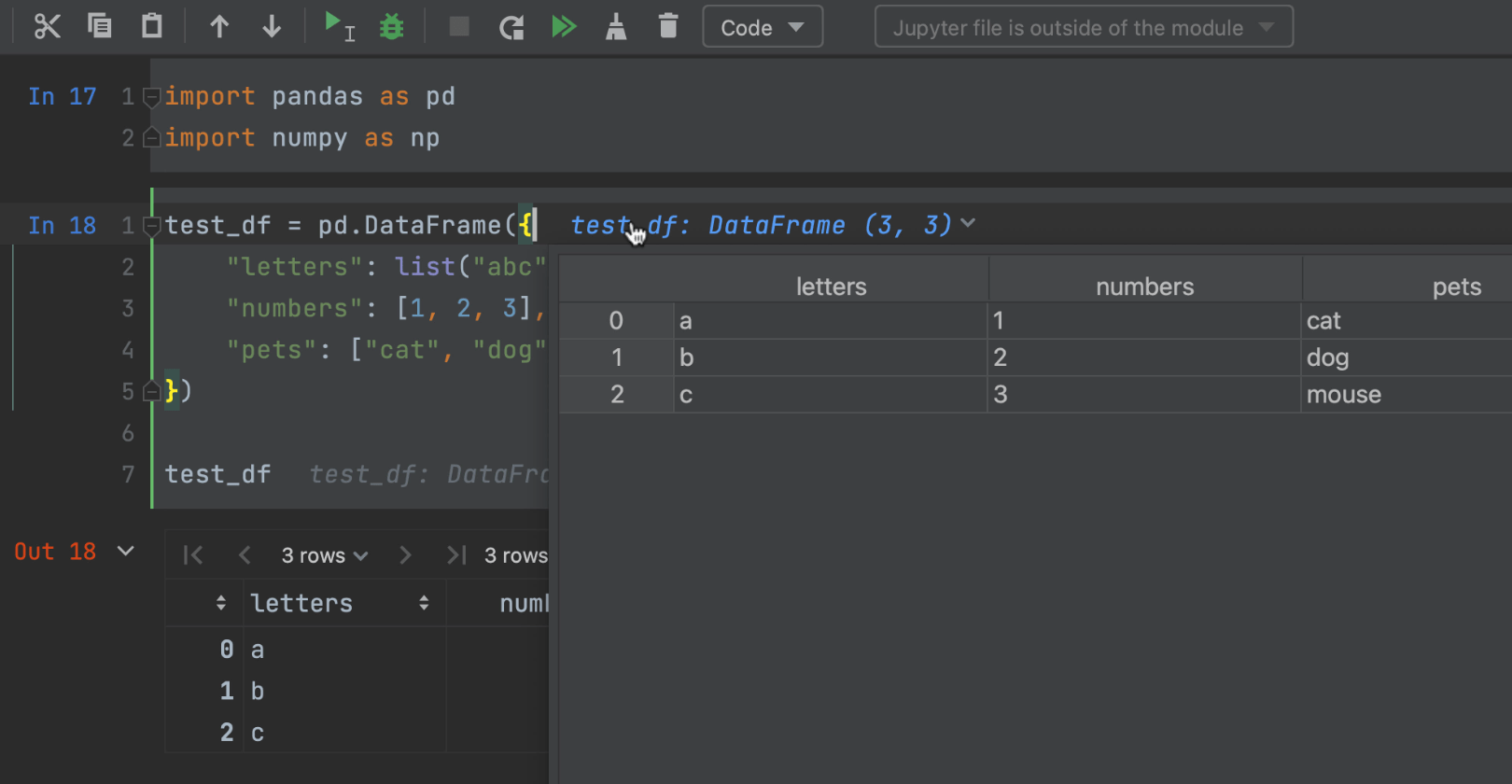
Data Vision
With Data Vision, you can inspect Jupyter variables within your notebook. Enabling this feature gives useful inline information about a number of important variable types, such as the size and contents of NumPy arrays and pandas DataFrames. Data Vision can be switched on by going to Settings/Preferences | Languages & Frameworks | Jupyter and selecting Show inline values in editor. At the moment, inline information is only available when the Jupyter Variables tool window is open.
Tables and databases
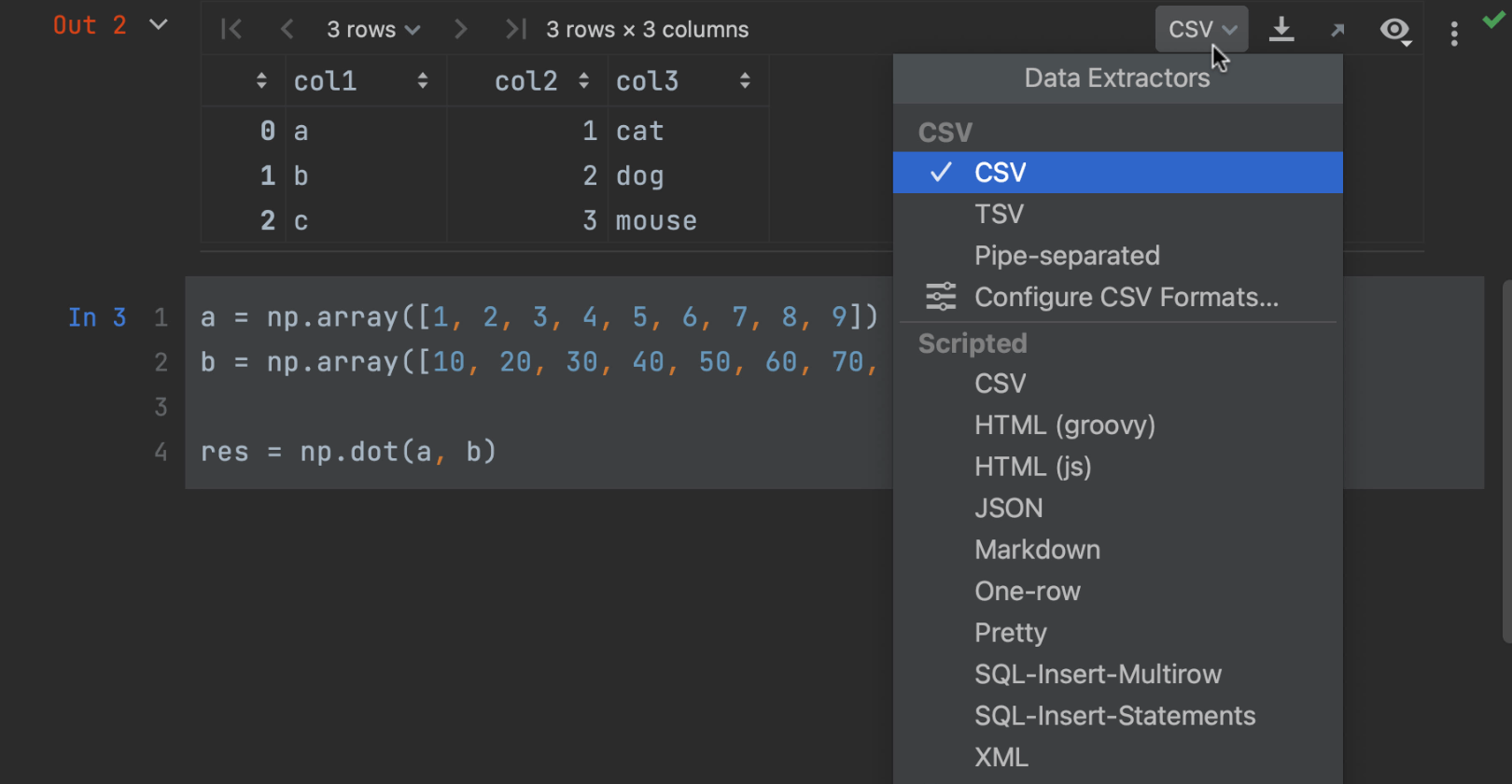
Enhanced DataFrame interactivity
There are now many more options for working with DataFrames in Jupyter notebooks. DataFrames can be exported in a wide variety of formats, including Excel, JSON, HTML, XML, Markdown tables, and SQL Insert statements. There are also additional options for viewing DataFrames, including transposing them and hiding columns.
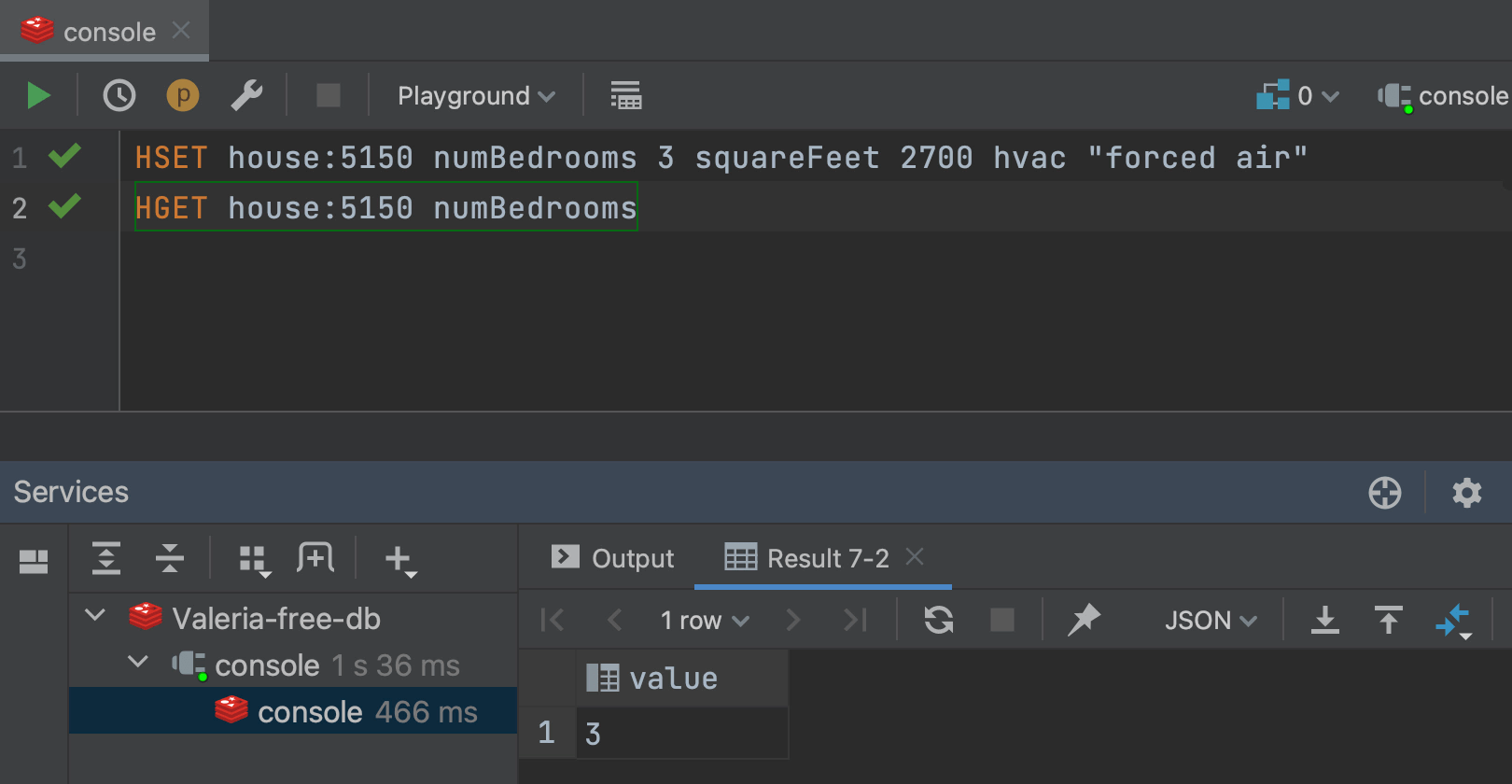
Redis support
Redis is now available as a supported database connection in DataSpell’s database tools. Redis databases can be connected, navigated, and queried right from DataSpell.
Quick Documentation
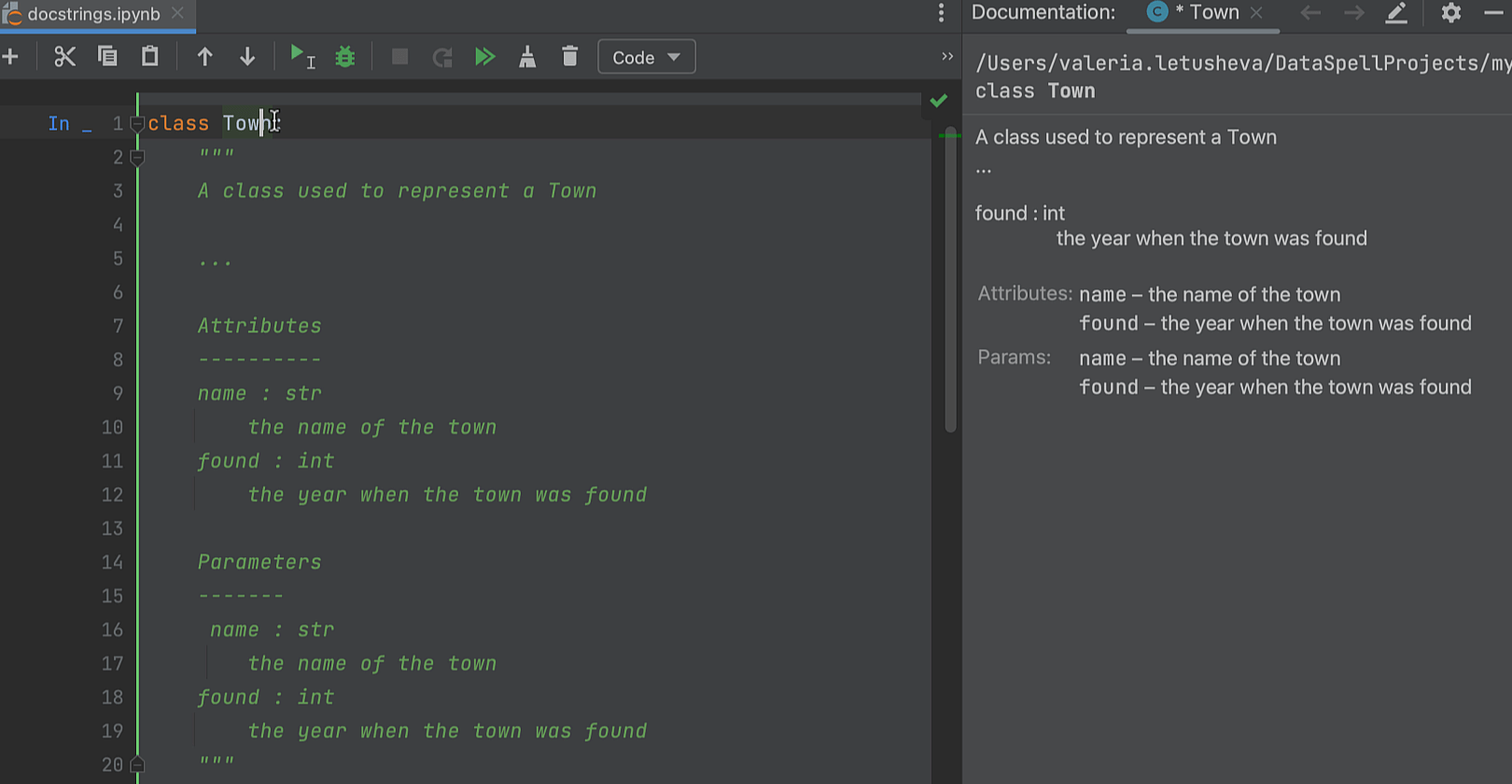
Recognition of attributes and parameters
Attributes and parameters defined in a docstring are now recognized as part of the Quick Documentation. Function parameters defined in the Other Parameters section of NumPy functions are also shown in the quick documentation popup.
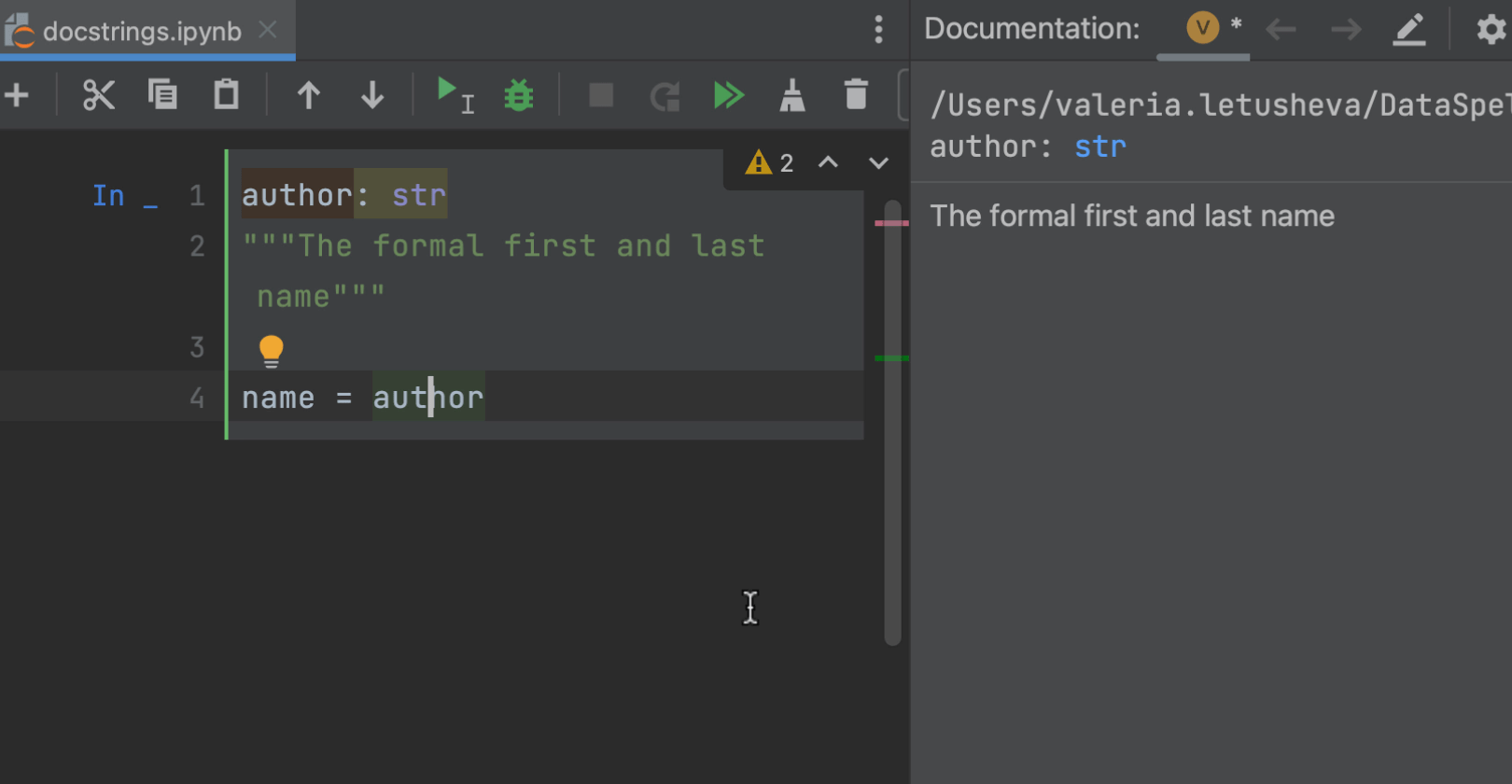
Type declarations shown in quick documentation
Type declarations, such as those created in dataclasses, are now recognized and displayed as part of the Quick Documentation.
UI
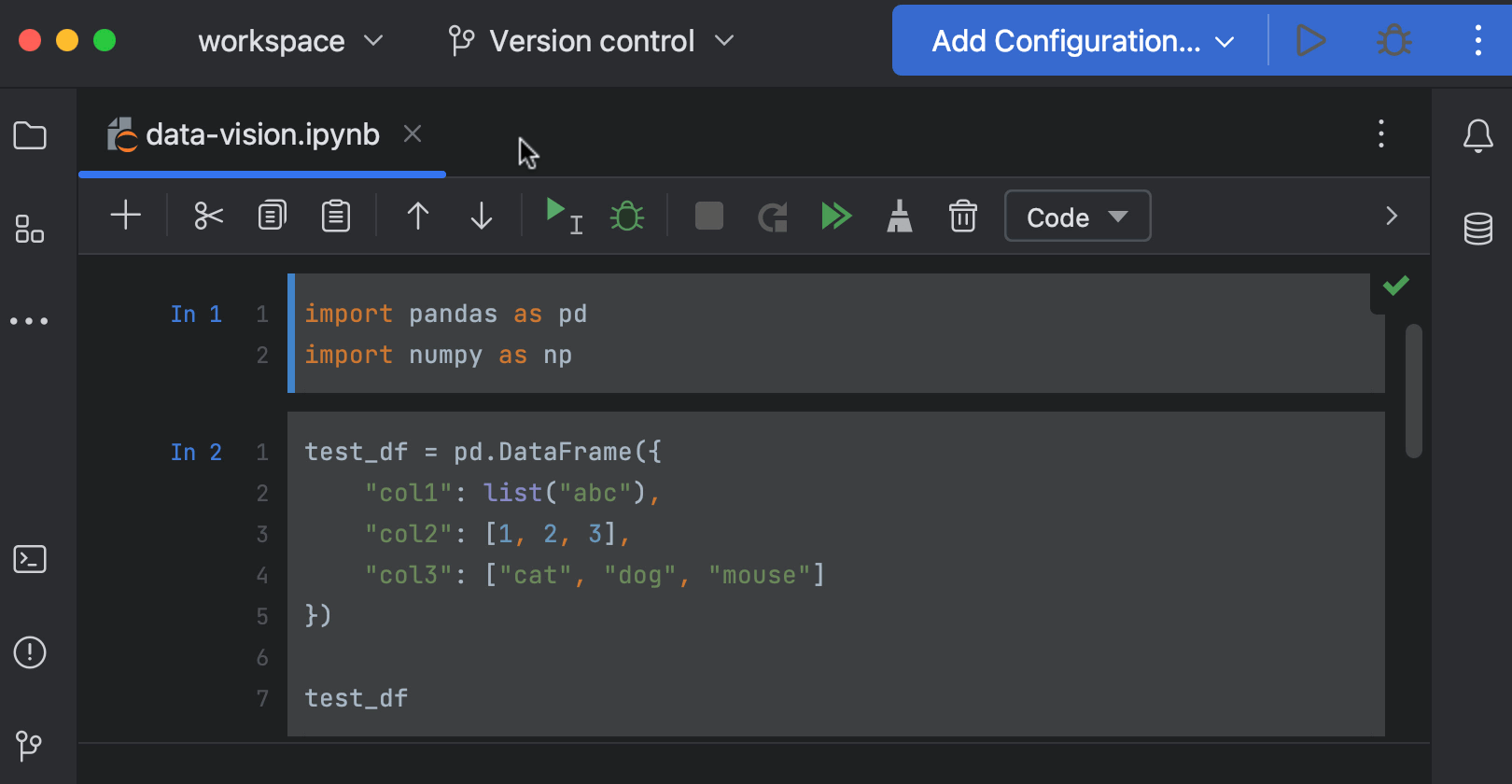
Ability to enable the new UI
The new lightweight UI is now available in DataSpell. It introduces a simplified main toolbar, a new tool window layout, an updated icon set, and new light and dark color themes. The new UI can be enabled by going to Settings/Preferences | Appearance & Behavior | New UI.